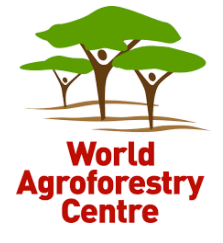Agroforestry Concessions Are a Strategic Mechanism for Smallholders in the Amazon. How Do We Make It Work?
Every year, the Peruvian Amazon loses more than 100,000 hectares of forest due to expansion of the agricultural frontier over state forest land. In the last 15 years, a significant share of frontier dynamics has been closely related to the expansion of cash crops such as coffee and more recently, cocoa and other annual crops, grown mainly by migrant smallholder farmers. However, on state forest land, legal property titles cannot be granted. Therefore, despite their primary connection to key global and regional commodity chains, these farmers remain largely informal and invisible to the state. Regardless of the fact that in their farms they manage a considerable number of trees under a mosaic of agroforestry, secondary and remnant forests stands, they cannot formally participate in the forest sector and do not receive any incentive to sustainably manage their land and forest resources.
Despite Peru’s ambitious commitment to reduce deforestation and emissions derived from the LULUCF sector, advances in the design and implementation of governance tools and strategies to revert land use change trajectories at the deforestation frontiers are still lacking.
Within this context, at the end of March 2018, the results of a project dubbed SUCCESS: Support to the Development of Agroforestry Concessions in Peru, led by ICRAF in collaboration with Freiburg University in Germany, and supported by the German Development Cooperation (GIZ), were presented in Lima to an audience comprising government officials and representatives from civil society and the private sector.
Agroforestry Concessions are an innovative legal provision introduced by the Forestry Law of Peru (Law N° 29763) that seek to reduce deforestation and promote restoration over previously cleared land by formalizing smallholders who have encroached on state forest land, and commit to either establish or maintain agroforestry systems in already deforested areas.
The study demonstrated that more than a million hectares of land in the Amazon is eligible for management under this mechanism, out of which 400,000 hectares is made up of forest that could be conserved, and the rest managed under an agroforestry mosaic. Proper implementation of the Agroforestry Concession with adequate design and packaging of incentives could benefit more than 120,000 smallholder families, majority of whom comprise coffee and cocoa farmers.
Participants discussed about three key ingredients required to ensure successful implementation of the Agroforestry Concessions: (a) improvement of the legal framework that could facilitate access to the mechanism by farmers, its attractiveness and its manageability at the farm and landscape level; (b) governance framework that is based on a strong partnership between the forest and agricultural sectors at multiple levels; and (c) establishment of an attractive incentive framework targeting the conditions that could reduce farmers’ dependence on continuous forest conversion. These range from integrated technical assistance under a farm-level approach, promoting annual, permanent crops and small-scale forestry and plantations, but understanding farmer’s circumstances and their need for infrastructure and services.
Click here to learn more, and to read the full Spanish version.



